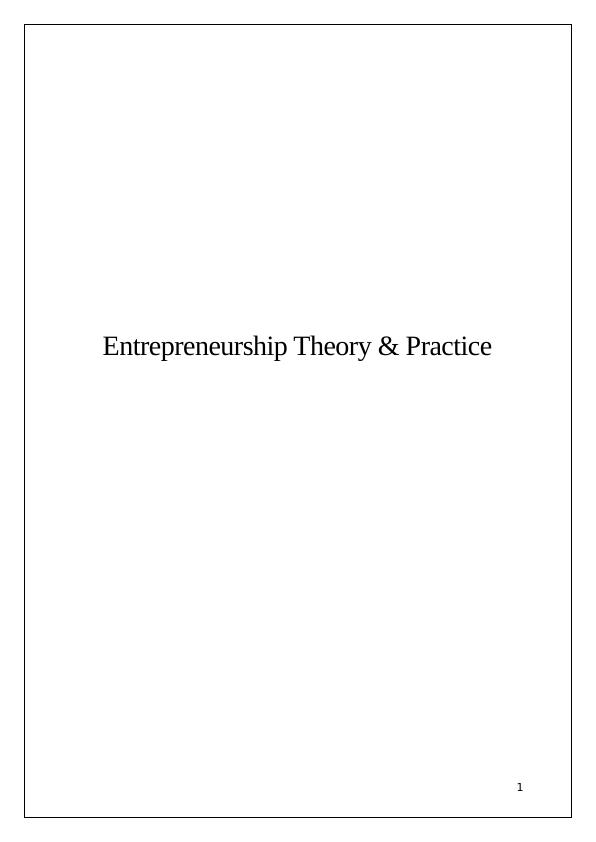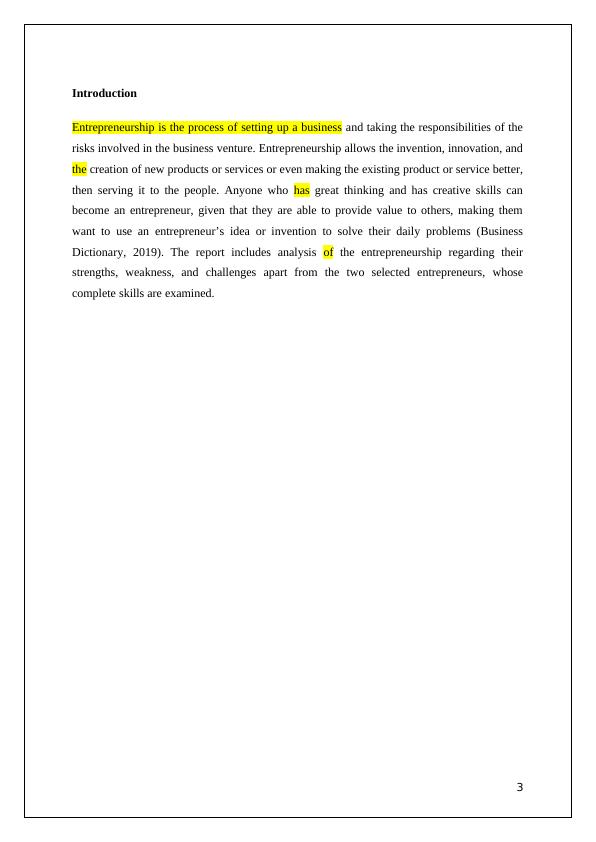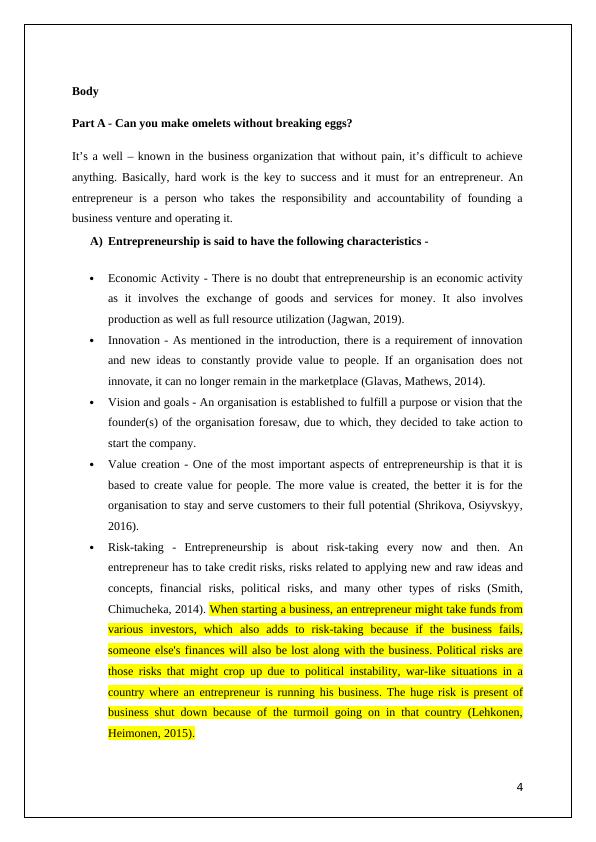Entrepreneurship Theory & Practice
Write a 2,000 word individual report on the strengths and weaknesses of entrepreneurs, with a focus on the saying 'You can't make an omelette without breaking eggs'. Minimum 10 academic sources and case studies required.
12 Pages3507 Words105 Views
Added on 2022-12-01
About This Document
This document discusses the theory and practice of entrepreneurship. It explores the characteristics, strengths, and weaknesses of entrepreneurship and provides specific examples of challenges faced by well-known entrepreneurs like Elon Musk and Howard Schultz. The document also discusses the strategies they used to overcome these challenges and achieve success.
Entrepreneurship Theory & Practice
Write a 2,000 word individual report on the strengths and weaknesses of entrepreneurs, with a focus on the saying 'You can't make an omelette without breaking eggs'. Minimum 10 academic sources and case studies required.
Added on 2022-12-01
ShareRelated Documents
End of preview
Want to access all the pages? Upload your documents or become a member.
new venture setup that is usually at a small level initially
|10
|2546
|43
Entrepreneurship Theory and Practice
|12
|2950
|490
Innovation and Entrepreneurship: Analyzing Elon Musk's Qualities and Challenges
|12
|3276
|93
Entrepreneurship: Acceptable Tradeoffs and Ideological Nature
|10
|2538
|235
Entrepreneurship and Small Business Management
|15
|4448
|86
Entrepreneurship in Business
|14
|4301
|20




